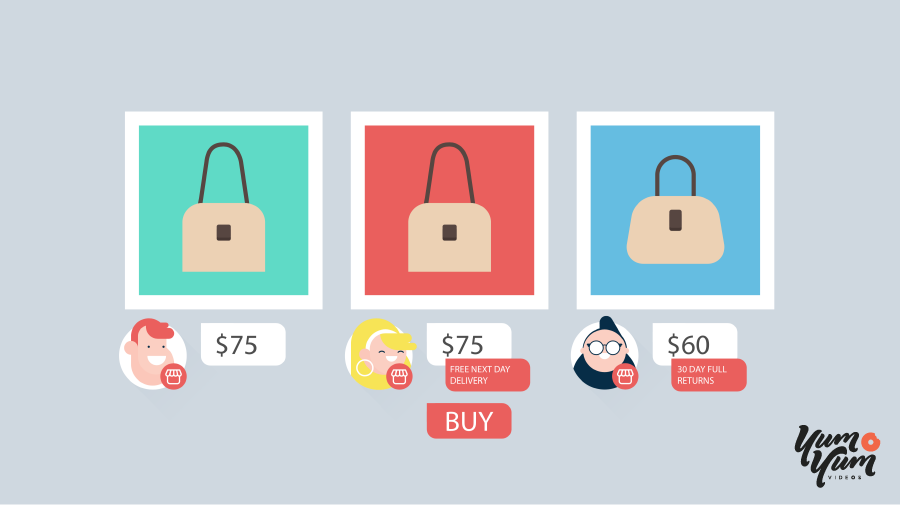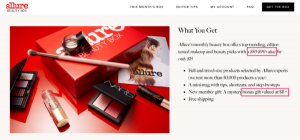Every marketer and business owner out there is constantly looking for the most effective way to sell. And while there’s no single definitive answer to that, in this day and age, you’d be hard-pressed to find a better alternative than video content in most situations.
Video lets us deliver our message in a compelling way while bringing the audience closer and nurturing branding, trust, and appeal— not bad for a single piece of content!
However, as great as video marketing can be, it doesn’t mean that just any video will do.
The thing with video – and doubly so for product videos – is that for it to deliver, a lot of effort and care needs to go into their planning and production stages. And that starts with understanding and choosing the right type of format that fits your message best.
Today, we’ll cover everything you should know before creating fantastic product videos that actually help you sell more, lives up to your expectations, and deliver the returns you are looking for.

Understanding the Best Types of Product Videos:
There are already a handful of popular formats out there that have gained favor over the past few years when it comes to product videos. As video grows increasingly more ubiquitous for digital marketing strategies, consumer trends and preference patterns become more easily identified, revealing the type of content more liable to bring results.
These formats resonate well with most audiences and are likely to prove to be an asset for companies looking to boost their product marketing strategy through videos.
Character Animation Videos
A favorite to business owners and marketers alike, character animations provide many alternatives for companies to portray their products and services to an audience.
This format’s major advantage comes in the way of budgeting, as they can be effectively put together without breaking the bank or sacrificing visual quality and still work marvelously as one of your pieces of content that converts the most in your marketing campaign.
One key insight you should keep in mind when it comes to character animation videos is to ensure that your main character is a carefully researched mirror of your target audience.
This seemingly small but crucial detail can be the difference between just a pretty video and one that’s continuously helping you convert viewers into buyers.
Whiteboard Animation
Likely one of the most effective types of marketing video formats out there when it comes to the early stages of the buyer’s journey, whiteboard animated videos resonate with most audiences across all kinds of niches, as they appeal to a basic human want: The desire to understand.
They act as the ideal medium to communicate complicated topics in a way that anybody can understand, using a style that can capture anyone’s attention with ease.
The most appealing feature whiteboard animation brings is that the action of what is being described by the narrator develops right in front of the viewer’s eyes. This makes it relatively easy to lose yourself in the video’s explanations without effort, which makes for an ideal situation to have the rest of its marketing elements – brand reinforcement, subtle CTAs, etc. – to take place that much more effectively.
By combining the appeal of educational videos with subtle but powerful visual marketing techniques, whiteboard animations dominate that ideal niche of content capable of helping you sell more while bringing audiences closer to your brand — all in one go.
Motion Graphics
Usually reserved for more complex types of products, motion graphic videos tend to be the ticket whenever you are trying to explain highly technical or involved products and services in great detail.
Here, you use animations and digital footage to showcase your product while creating the illusion of real-time movement and rotation. This visual dynamic helps you explore every detail of the component parts and inner workings of something in an interesting way that can retain the viewer’s attention.
This particular format is often used to present complex hardware or tech gadgets, help people visualize it, and showcase the features and processes of software platforms and apps without losing the viewer’s attention.
Live-action Videos
Possibly the most easily-recognized and resource-intensive format on this list, live-action marketing videos usually refer to the classic type of TV commercials we’ve known for years but adapted to the online arena.
In reality, live-action product videos comprise a much broader category, including in-depth reviews, unboxings, versus videos, and many other seemingly user-generated content.
By their very nature, live-action videos are appealing for most physical products – as opposed to software solutions and apps – since you get to portray them being used and enjoyed by people in real-life situations. These types of videos help establish connections between your potential customer’s pain points and how your product addresses them.
There’s a reason why this format has remained a popular choice for marketers through the years, and that’s because when done right, it’s easy to have potential buyers see themselves reflected in the video and making a connection to your product.
The tricky part, though, is to translate this format to work as well on an online platform.
That is, to make sure you are meeting the expectations and working within the constraints of the medium (like the format, lengths, SEO, etc.), which is something we’ll discuss a bit more about in the next section.
Important Things to Keep in Mind when Working on Product Videos
So, now that you understand – and have hopefully settled for one of – these popular product video formats, it’s an opportune time to briefly go over a handful of crucial things you need to consider (and keep present) when working on your company’s own product videos.
Precision Over Spread
When you set out to cover one of your products in a video – especially if this is your first one – it can be difficult to resist the temptation to include as much as possible (usually every single one) about your product’s different features and characteristics. More often than not, this is a mistake.
Nine times out of ten, you’ll want to use concise videos (usually under 90 seconds long, sometimes even shorter than that) as part of your marketing campaign. This means that figuring out precisely the feature, or handful of features, you wish to focus on is one of the most important decisions you’ll have to make as far as the content of your videos goes.
One main feature followed by two or three supporting ones seems to be the sweet spot for most of these short videos. Keep your audiences’ pain points in mind at all times, and work to match your product’s features to them; after all, there are other – and better suited – video styles to promote the rest of your marketplace catalog.
Script and Production
Your script needs to work as a marketing piece, period. Even in whiteboard animations (and maybe even doubly so in those) where subtlety is paramount, your script needs to be cleverly written to lead the viewer on a short adventure that addresses their needs and how your products solve them. This means that you need to find a way to convey information in an exciting way and in a short amount of time, which can be reasonably challenging, and that’s precisely where your storyboard comes in.
Use a storyboard to complement and develop the work you already did on your script from a visual standpoint. Most of the points you make on the script will need to be either reinforced or expanded upon on the visual content of your video. And making good use of your storyboards is the only way to one, make sure the whole is cohesive, and two, that your script’s narrative is working towards convincing your viewers alongside transmitting your message.
Voiceover, Music, and Sound Effects
Once everything else is done, it’s necessary that the audio part of your video works well to bring it all together.
The voiceover provides a perfect opportunity to further the video’s marketing appeal. Most of the time, you’ll want to pick voice actors that resemble your target demographic.
Music is a big part of your video’s overall sentiment and needs to match the developing events in the video. Side note, avoid music with lyrics as it overlaps with the voiceover.
Lastly, we have the FX, which can have a powerful effect on helping your video with achieving its ultimate goal of furthering your branding and converting people. For example, a common use of sound FX on product videos revolves around adding discreet cheers and clapping effects when your brand makes its first appearance on the video. And on that note…
Brand your Product Videos
Whichever format you settle for, you need to ensure your branding is coming through in your video.
This can mean a lot of things. Using your company’s colors and aesthetics in your video or including your motto seamlessly as part of the script are all common strategies that can help you keep your company’s image at the forefront – even when it is not being stated overtly.
Here’s an excellent example of how a video can use branding effectively without being outright evident about it:
Not Just Any Video, but the Right One
As you can see, when it comes to video marketing, making sure your video effectively fulfills a few characteristics comes as part of the deal.
Videos can be a powerful element to incorporate into your product’s marketing campaign to complement other strategies like link building and email outreach, but for you to see the results you want, you need to make optimized pieces like the ones we discussed.
So, take a look around YouTube for product videos you think fulfill most of these characteristics, that inspire you, that you think are effective, and share them with us in the comments below as you start working on your own!
Digital & Social Articles on Business 2 Community
(33)






